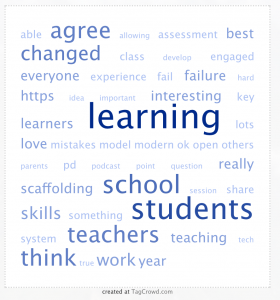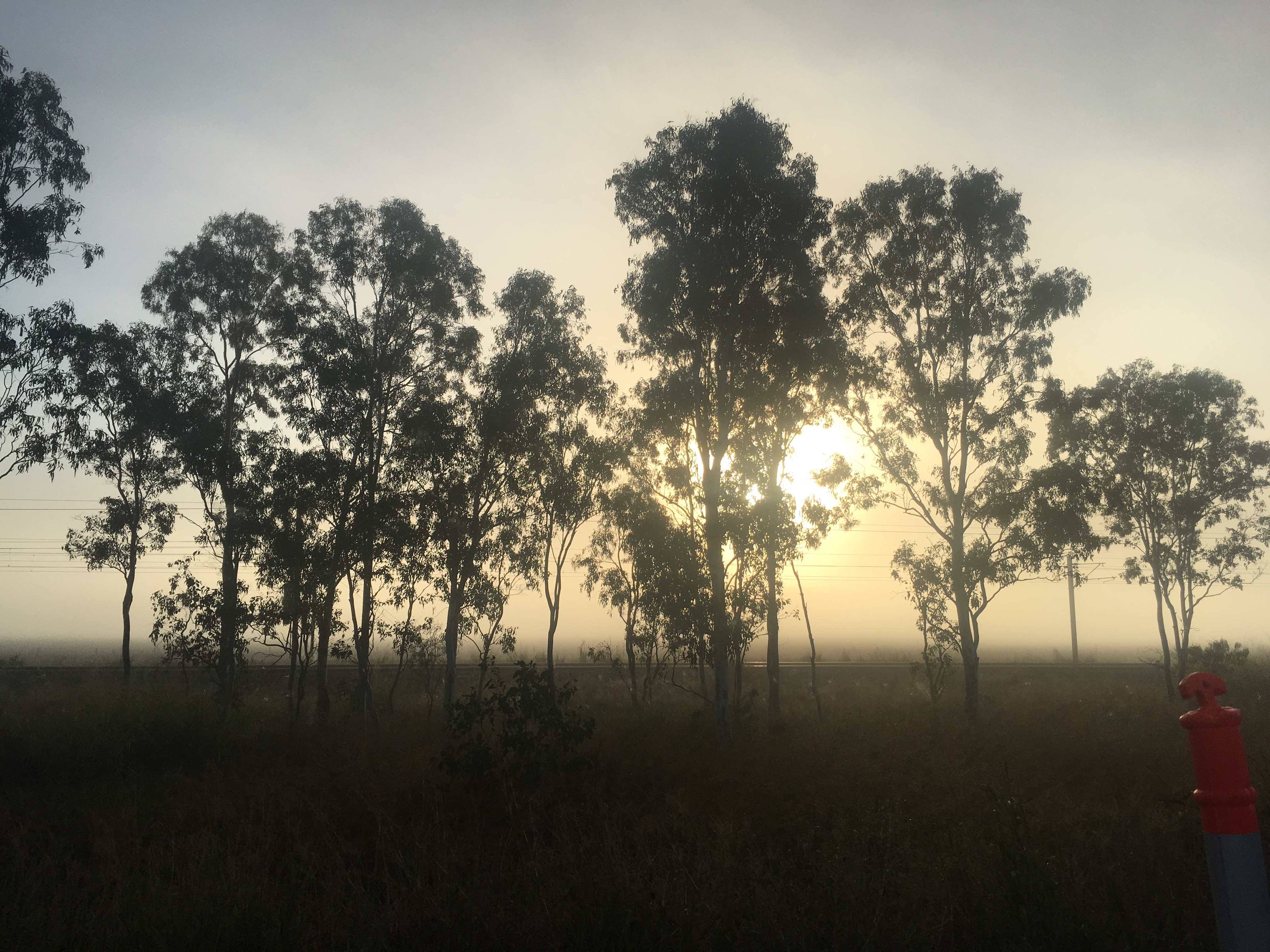
I’m on my last subject in my MEd Knowledge Networks and Digital Innovation at Charles Sturt University. This week in the readings, the online discussions and the colloquium with Bruce Dixon, I came across a range of terms, concepts and practices that initially seemed unfamiliar to me. It was like these were jigsaw pieces that seemed to have strayed from other puzzles. So I’ve been doing some digging to try to fit these pieces into this dynamic and evolving mental map of my learning and find that many of these were known to me albeit in other guises or ‘unnamed’. Here are some examples:
Socratic Circles Augmented with Technology
The readings touch the use of Twitter in socratic circles, using the tool as a shared platform for ‘back channel’ device for wider commentary. This was certainly something we experienced with in Monday’s colloquium where there was a lot of commentary and questions posed; however, one point to note was from @hunch_box (https://twitter.com/hunch_box) about the potential distraction of the back channel in that we may lose our focus on the discussion.
Backchanneling is hard for me, I can only focus on one thing at once. I think research supports this on multitasking?
With socratic circles, the learning experience comes from the inner circle and the discussion in the outer circle moves the class forward through the stages of reflection, self-assessment and goal setting (Copeland, 2005, p. 77). As we experienced in our colloquium, a shift occurs when technology is introduced. Of course this experience was not set up as a traditional socratic seminar; however, we can note that the outer circle discussion was in real time and simultaneous with the inner circle discussion and the inner circle was a mix of slides, oral debate/comments and questions and comments added to the chat. Therefore the chat tool, a key tool for the outer circle, allowed the communication to be synchronous and visible to all participants with far more agility in moving the conversations forward, branching in different directions and, most importantly, perhaps, responding to the needs and questions of the participants. Circling back to the distraction element, if we experienced this in a more traditional setting would the conversation move more quickly? Would we have more or less take-aways? Would our learning experience be more or less richer? This is something I would like to explore with my students in the future.
Visualising Learning
To make connections and make sense of the learning experiences presented to me, I often have to reformat, remix or mash up elements. I wanted to see if there were any central or recurring concepts in our back channel and so took the rtf of the dialogue from the chat of our colloquium with Bruce, removed all the names and any keywords that dealt with the mechanics of the session (for example, sound, thanks, mic) and then put into a word cloud (below). I’m not sure if there is anything significant that stands out in the cloud. Besides the obvious LEARNING, STUDENTS, TEACHERS and SCHOOL, SCAFFOLD prompted me to revisit that non-linear discussion of the challenges of over-scaffolding versus providing new directions for students; likewise, the term FAILURE prompted me to revisit the discussion (just search for FAIL in the rtf and you will see the discussion intermingled with other threads and themes) where the tension was raised between students’ negative perception of failure versus the positive role of failure in the learning process. Overall, for me, sometimes making a conversation visible using a cloud generation tool, such as tagcrowd, can often trigger further thought and connections.

Open Learning
This is a new term for me and was posed in the colloquium and in the discussion forum:
The term ‘open learners’ is replacing the term ‘21st century learners’. What does the term ‘open learners’ mean to you – and is it a useful term?
I am wondering if this is a term that is used widely in Australia or I have missed/ignored it up until now.These are my initial questions:
- What is an ‘open learner’?
- What are the characteristics of an open learner?
- Where did the term come from?
- Where is the term being used?
- What is the connection (if any) between an open learner and/or open learner models and/or open learning?
Interestingly, others jumped in with some confirming that they too were unclear. Although it’s early days, this certainly is a lively and responsive group and so it’s interesting to note the lack of immediate replies with the exception of a reference to the paper Beyond Learning- as-Usual: Connected Learning among open Learners passed by @lisanash9. Although there was no explicit definition, the initial mini-case study revealed open learning through this example:
Reflective Blogging
The paper from Ross was an interesting but quite challenging read as I struggle with the rich scholarly vocabulary and I want to explore her work further to get a better understanding of the concepts of spectacle and placeholder in reflection. What resonated with me was how she linked tags to wormholes:
Each time I reuse a tag – knowingly or unknowingly – I am producing a link, a wormhole between my experiences and present and someone else’s (which might be a past self) (Ross, 2012, p. 263).
I have had a blog since 2010 but rarely have I used tags effectively although I do revisit posts to see how my thinking has developed or changed over the years. In #inf530, my final assignment (Connectivism in a K-12 Blogging Environment) looked at the role of blogs in a K-12 connectivist learning environment and have since presented this in two k-12 conferences; however, despite the availability of blogs and online environments for learning (in international schools, which is my area of practice), I do think that blogging has a long way to go before we see it as an embedded and sustainable practice with students. As I prepare for the new academic year, I really do want to rethink the approach to blogging with students, by exploring further.
References
Carfagna, L. (2014). Beyond Learning-As-Usual: Connected Learning Among Open Learners. Irvine, Ca. Retrieved from http://dmlhub.net/publications/beyond-learning-usual-connected-learning-among-open-learners/
Copeland, M. (2005). Socratic circles : fostering critical and creative thinking in middle and high school. Retrieved from http://ebookcentral.proquest.com.ezproxy.csu.edu.au
Ross, J. (2012). The spectacle and the placeholder: digital futures for reflective practices in higher education. {…} of the 8th International Conference on {…}, 260–265.
This entry is an slightly edited version of the post in my CSU blog.
Image: Creative Common from https://www.kijiji.it/speciali/blog/

Be First to Comment